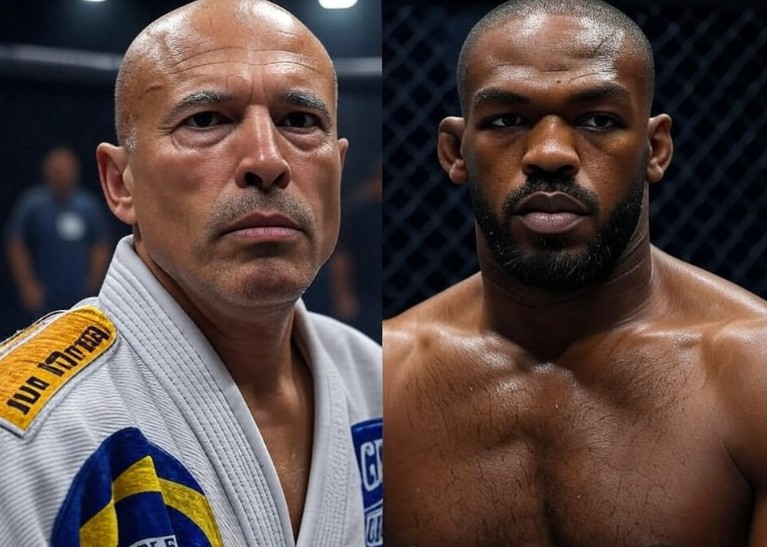Training like a UFC fighter isn’t for the faint-hearted. It demands discipline, versatility, and a willingness to push physical and mental limits.
UFC fighters are among the most well-rounded athletes in the world, blending strength, endurance, and technical skill to compete in the octagon. While you may not step into a cage, adopting their training principles can transform your fitness and mindset. Here’s a detailed guide to training like a UFC fighter, from workouts to recovery.
The cornerstone of UFC training is versatility. Fighters must excel in striking, grappling, and cardio, requiring a balanced regimen. Start with a weekly schedule that mimics a fighter’s approach: three to four days of skill work (boxing, jiu-jitsu, wrestling), two days of strength and conditioning, and one day of active recovery. Most UFC fighters train two to three times daily during fight camps, totaling 15-20 hours per week. For amateurs, 8-12 hours is a realistic starting point.
Striking drills build power and precision. Boxers like Nate Diaz rely on high-volume punching, averaging 4.73 significant strikes per minute in the UFC. Practice shadowboxing for 3-minute rounds, focusing on footwork, head movement, and combinations (jab-cross-hook). Incorporate heavy bag work to develop power, aiming for 100-150 punches per round.
Muay Thai fighters like Joanna Jedrzejczyk add kicks and elbows, so include pad work with a partner to mimic fight scenarios. Aim for 4-6 rounds, resting 60 seconds between each.
Grappling is equally critical. Brazilian jiu-jitsu (BJJ), a staple for fighters like Demian Maia, emphasizes submissions and positional control. Join a BJJ gym and drill techniques like guard passes, sweeps, and submissions (e.g., rear-naked choke, triangle). Wrestlers like Khabib Nurmagomedov dominate with takedowns, so practice double-leg and single-leg entries with a partner. Spend 60-90 minutes per session, focusing on technique over strength to avoid burnout.
Strength and conditioning separate good fighters from great ones. UFC fighters combine Olympic lifts (clean and jerk, snatch) for explosive power with bodyweight circuits for endurance. A sample workout: 5 sets of 5 deadlifts at 70% of your one-rep max, followed by 3 rounds of 20 push-ups, 15 pull-ups, and 10 kettlebell swings. Aim for 45-60 minutes, emphasizing form to prevent injury. Fighters like Jon Jones incorporate plyometrics (box jumps, medicine ball slams) to enhance agility, targeting 3 sets of 12-15 reps.
Cardio is a UFC fighter’s lifeline. Fighters like Max Holloway boast elite endurance, maintaining 7.17 significant strikes per minute over five rounds. High-intensity interval training (HIIT) mimics fight conditions. Try sprinting 30 seconds at 90% effort, then jogging for 60 seconds, repeating for 20 minutes. Alternately, use a rowing machine or assault bike for 5-minute rounds at 80% intensity, resting 2 minutes between rounds. Aim for 3-4 cardio sessions weekly, totaling 90-120 minutes.
Recovery is non-negotiable. UFC fighters prioritize sleep (8-10 hours nightly), stretching, and foam rolling to reduce muscle soreness. Ice baths and saunas, used by fighters like Georges St-Pierre, aid muscle repair. Incorporate 15 minutes of dynamic stretching post-workout and 10 minutes of foam rolling daily. Nutrition, covered later, fuels recovery, with fighters consuming 1.6-2.0 grams of protein per kilogram of body weight daily.
Mental toughness sets UFC fighters apart. Visualization, used by fighters like Israel Adesanya, involves mentally rehearsing techniques or fights for 10-15 minutes daily. Meditation or breathing exercises, practiced by Nate Diaz, reduce stress and improve focus. Set small, achievable goals—like mastering a new BJJ sweep—to build confidence.
Training like a UFC fighter requires commitment, but the rewards are immense: improved fitness, discipline, and resilience. Start gradually, find a local gym, and embrace the grind. The octagon may be far off, but the fighter’s mindset is within reach.
Article 3: UFC Fighting Rules ExplainedThe UFC’s octagon is a battlefield where raw athleticism meets structured chaos, governed by a detailed set of rules designed to ensure safety, fairness, and excitement. The Unified Rules of Mixed Martial Arts, adopted by the UFC in 2000, provide the framework for every fight, balancing the sport’s intensity with clear boundaries. Understanding these rules is key to appreciating the strategy and drama of UFC bouts.
Here’s a comprehensive breakdown of UFC fighting rules, from scoring to fouls.The UFC operates under the Unified Rules, standardized by the Association of Boxing Commissions (ABC).
Fights occur in an eight-sided caged arena, the octagon, measuring 30 feet in diameter with a 6-foot-high fence. Most bouts are three rounds, each five minutes, with title fights and main events extending to five rounds. A one-minute rest period separates rounds. Fights can end via knockout (KO), technical knockout (TKO), submission, decision, disqualification, or no-contest.
Scoring is based on the 10-point must system, borrowed from boxing. Three judges evaluate each round, awarding 10 points to the winner and 9 or fewer to the loser, based on effective striking, grappling, aggression, and octagon control. Effective striking prioritizes significant strikes—clean, impactful blows to the head or body.
For example, Max Holloway’s 7.17 significant strikes per minute highlight his scoring prowess. Grappling includes takedowns, submission attempts, and dominant positions, as seen in Khabib Nurmagomedov’s 4.1 takedowns per 15 minutes. Judges weigh damage over volume, so a single devastating strike, like Holly Holm’s kick against Ronda Rousey, can sway a round.
Fights end in several ways. A knockout occurs when a fighter is unconscious, as in Conor McGregor’s 13-second finish of Jose Aldo. A TKO results from referee stoppage due to unanswered strikes or inability to defend, like Jon Jones’ stoppage of Daniel Cormier. Submissions, such as Nate Diaz’s choke of McGregor, occur when a fighter taps out or loses consciousness.
Decisions come in three forms: unanimous (all judges agree), split (two judges favor one fighter), or majority (two judges score for one fighter, one scores a draw). Rare outcomes include disqualifications for repeated fouls or no-contests due to unintentional fouls or external factors.
Fouls are strictly enforced to protect fighters. Illegal moves include eye pokes, groin strikes, headbutts, biting, hair-pulling, and strikes to the back of the head or spine. Small-joint manipulation (grabbing fingers or toes) and downward elbow strikes (12-6 elbows) are prohibited.
Fouls like grabbing the cage or gloves, seen in early UFC events, now result in warnings or point deductions. Severe or intentional fouls, like Gabriel Gonzaga’s illegal upkick against Mirko Cro Cop, can lead to disqualification. Referees, like Herb Dean, have discretion to issue warnings or stop fights for safety.
Weight classes ensure fair competition, with eight men’s divisions (flyweight to heavyweight) and four women’s divisions (strawweight to featherweight). Fighters must weigh in within their division’s limit the day before the fight, with a one-pound allowance for non-title bouts. Failure to make weight, as in Charles Oliveira’s 2022 title fight, can result in fines or fight cancellations.
The UFC’s anti-doping program, overseen by USADA until 2023 and now by Drug Free Sport International, tests for banned substances like steroids, with violations leading to suspensions.
Special rules apply to title fights and “sudden death” scenarios. In championship bouts, a draw results in the champion retaining the title. In non-title fights, a draw means no winner is declared.
The “grounded opponent” rule, clarified in 2017, protects fighters with one hand or knee on the mat from certain strikes, like head kicks, though enforcement varies. Open scoring, tested in some promotions, isn’t used in the UFC, keeping judges’ scores private until the fight ends.
These rules shape the UFC’s unique blend of strategy and violence. Fighters like Georges St-Pierre exploit takedowns and control to win rounds, while strikers like Israel Adesanya rely on precision to score knockouts. Understanding the rules enhances appreciation of these tactics, revealing the chess match beneath the chaos.


